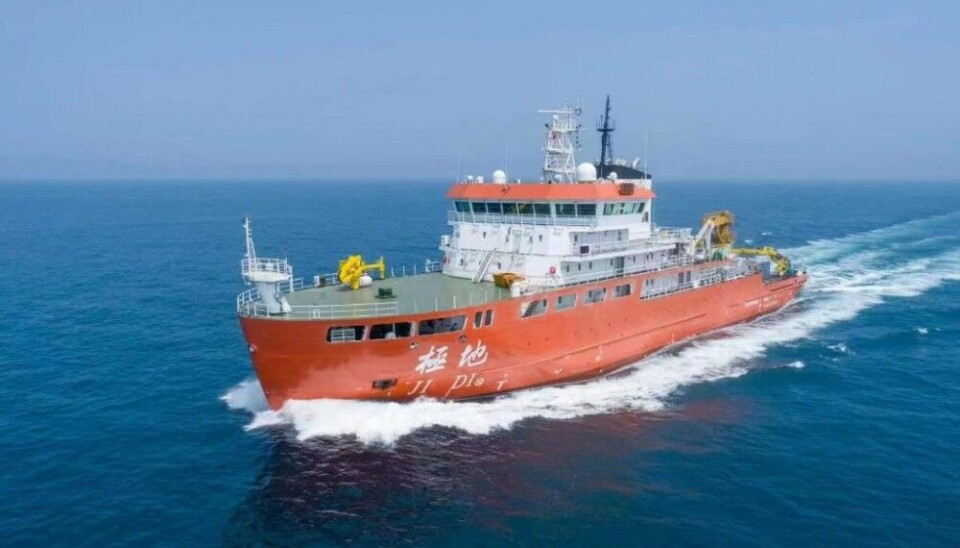
China commissions new icebreaker
The research vessel is capable of breaking through one meter thick sea-ice and is equipped with drones, unmanned ships and underwater autonomous robots.
There was celebration on the pier of the Qingdao Olympic Sailing Center as the Chinese Ministry of Natural Resources officially commissioned its new polar research vessel, the Jidi (“Polar”).
The vessel that has been under construction since November 2022 in late June set out from the shipyard in Nansha towards Qingdao where it was officially commissioned on the 5th of July, Chinese authorities inform.
Next to the Jidi was moored the Xue Long 2, the icebreaker that over the past years has been China’s main Arctic and Antarctic research ship. Shortly after the Jidi commissioning ceremony, the Xue Long 2 set out at sea for this year’s Arctic expedition. Judging from information from the Russian Northern Sea Route Administration, the research icebreaker will sail along major parts of the Russian Arctic coast, including the East Siberian Sea, the Laptev Sea and the Kara Sea.

The Jidi is designed for summer-time operations in Arctic waters, but it is not clear if it this year will join the Xue Long 2 towards the north.
The Jidi is a new generation of icebreaking research ships designed and built by Chinese companies, the country’s government informs. It will have Qingdao as its home port.
The ship is 89,95 meter long and has a full load displacement of 5,600 tons. It has a crew of 60 and can stay self-sustained at sea for 80 days. It is able to break through one-meter thick sea-ice at a speed of 2 knots.
According to the Chinese North Sea Bureau, a unit under the Ministry of Natural Resources, the ship is equipped with a variety of marine survey equipment and can simultaneously undertake comprehensive observation, investigation and research tasks of the atmosphere, sea ice, three-dimensional water bodies, geophysics and other marine environments.
On board is a variety of advanced technology and research equipment, including drones, unmanned ships and underwater autonomous robots. Among them is a heavy-load fuel drone that can carry 250 kilograms of cargo at a time.
The ship technology applies China’s independent satellite network system to undertake research in the air, space, sea, sea-ice as well as under water.
China has over the past decade significantly heightened its focus on the Arctic. The country officially defines itself as a so-called near-Arctic state and its Arctic policy document adopted in 2018 specifically highlights research and climate change.
At the same time, the country’s Arctic drive is perceived with growing concern among several Arctic countries. The Nordic countries, Canada and the U.S all see China as a looming security threat and are increasingly keen on restraining its activities in the region.















